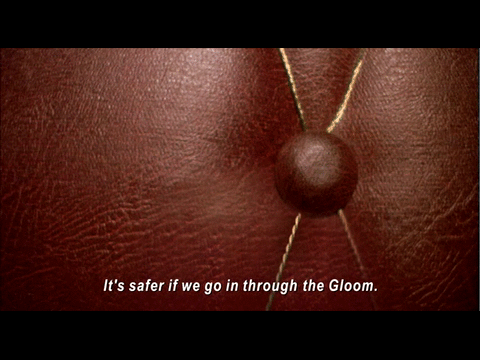Subtitles in foreign language films don’t have to be visually boring, uninspiring, or ugly. But too often, that’s exactly what they are. Legible, maybe, but still visually dull and lifeless. Standard subs are rarely well integrated into a film’s visual aesthetic. Alice Rawsthorn (2007) puts it bluntly in her critique of the standard subtitle:
Subtitles are almost always badly designed. Illegible typefaces drift on- and off-screen at the wrong moments, lurking so low that the bottoms of the letters are chopped off, and obstructing the audience’s view of gripping twists in the plot, or especially beautiful scenes. It doesn’t seem to matter how good – or bad – the film is, the size of its budget, the quality of the cinematography, sets, costumes or titles, because the subtitles are still dire. Every other area of movie aesthetics has a proud design history, except subtitling.
Night Watch (2004) is not your typical subtitled film. A Russian horror flick and the first of a planned trilogy, Night Watch is a game changer. In an unusual move, director Timur Bekmambetov “insisted on subtitling [Night Watch] and took charge of the design process himself,” as opposed to having the Russian speech dubbed into English or leaving the subtitling process to an outside company (Rawsthorn 2007). He adopted an innovative approach: “We thought of the subtitles as another character in the film, another way to tell the story” (Rosenberg 2007).
The resulting subtitled film is truly beautiful and inspiring. I honestly couldn’t get enough of the animated subs as I watched and re-watched the film. Rawsthorn (2007) calls the subtitles “sensational” and cites a film critic who calls them “the best I have encountered.”
Most of the film’s subtitles are standard and unobtrusive: pop-on style, bottom-centered alignment, white letters, sans serif typeface. But in a number of key places, the subtitles come alive, blending form and content in innovative ways. When the subtitles become dynamic and responsive, meaning is conveyed not simply through the words themselves but in how the words are visually presented — what they are made to do, how they dynamically move and transform, how they visually support the narrative.
Perhaps the most dramatic examples involve the red subtitles that dissolve like liquid to resemble blood. In the first appearance of this sub, an evil vampire voice whispers “come to me” to a boy. The boy is swimming in a public pool when he receives the vampire’s call, his nose bleeds, and the red subtitle dissolves like blood in the water. The red, liquid form of the subtitle resembles the red, liquid blood streaming from the boy’s nose, linking vampire and boy together in dramatic fashion. Indeed, “come to me” is a command that the boy is compelled to follow, because the command (as a subtitle) might as well be communicated in the boy’s own blood. (For each of the animated GIFs below, I extracted the subtitles and closed captions together into the same video file. The closed captions, when present, occupy the top of the screen, which is the standard approach when English subtitles and closed captions work together to convey meaning.)
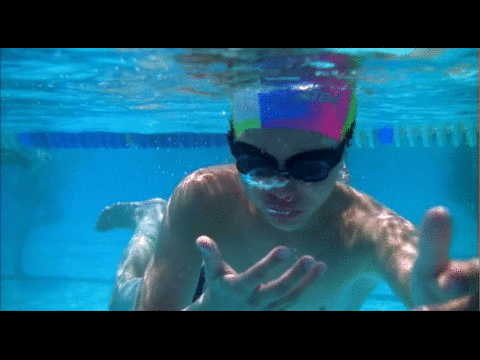
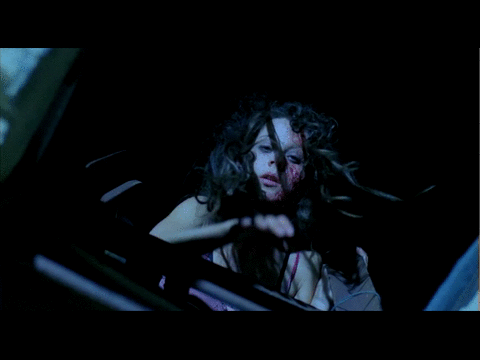
A number of subtitles also flicker and vibrate in concert with the flickering screen, thus reinforcing the chaos and confusion of the scene.
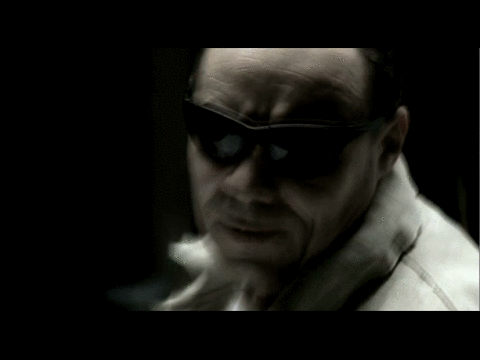
Small touches suggest the level of care that was taken with the subtitle track. Note the way that the following subtitle “blinks” at the same time that the speaker blinks her eyes. In a small way, this blinking subtitle seems to represent a more direct expression of the speaker’s will than a subtitle that tries to sit unobtrusively at the bottom of the screen. She is speaking to us through the subtitle; the subtitler is not speaking for her.
This speaker has also just transformed from owl to woman, and owls, of course, are characterized by their distinctive blinking. The blinking subtitle invokes the speaker’s recent status as owl and reinforces the speaker’s own forced and unnatural blinking.
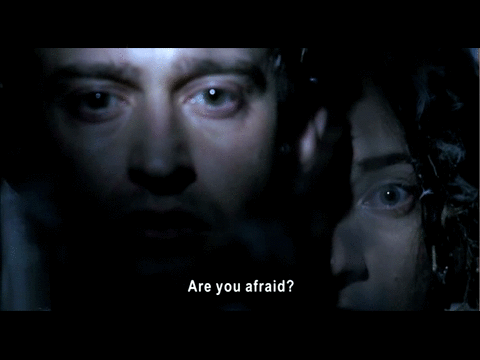
Owl feathers rain down on the speaker and her subtitled speech:
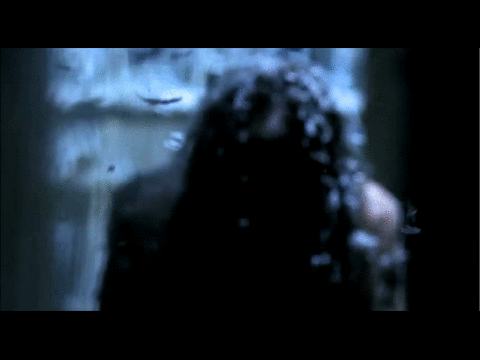
Bekmambetov also plays quite a bit with dimensionality, layering the subtitles among the other elements in the scene, integrating them more fully into the narrative. Subtitles don’t just sit on top of the movie frame like an afterthought or add-on but interact with the visual calculus of each scene.
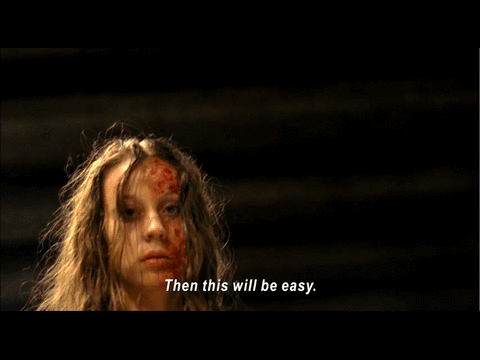
In the following example, the speaker’s hand gesture invokes his subtitled command (“Sit still, witch!”). A second gesture wipes it from the screen. Gesture and speech are tightly integrated, providing, perhaps, a more effective way of timing speech than simple timestamps and pop-on style delivery.
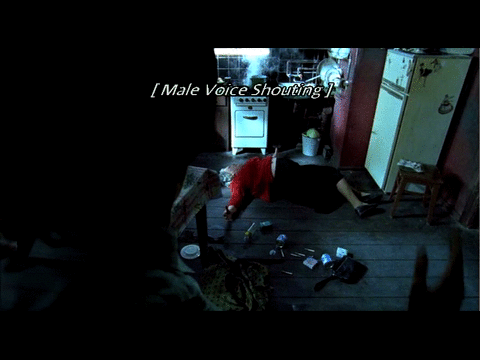
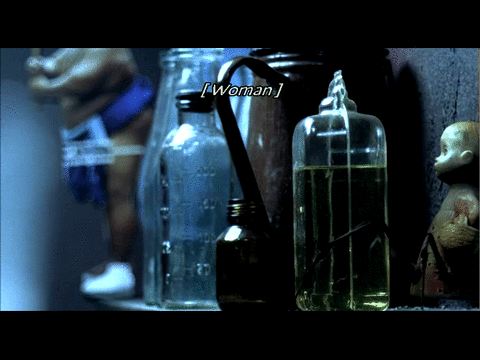
When the good guys enter the Gloom, an alternative reality that only the Others can enter, the subtitles recede and break apart to reinforce the break from reality:
Animated subtitles embody the speech and become part of the action:
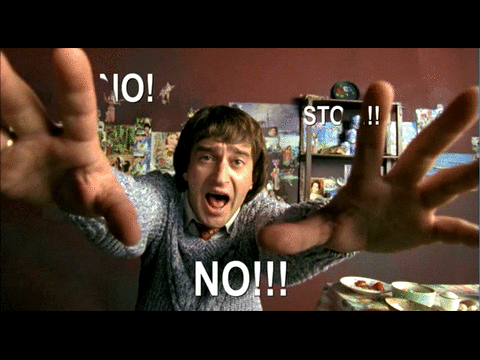
Night Watch puts closed captioning on notice. While technical constraints currently prevent closed captioners from replicating the dynamic, animated style of the hard-coded subtitles in Night Watch, we shouldn’t let technical constraints prevent us from experimenting with novel forms of captioned expression. Studies of animated captioning, for example, should continue in concert with usability studies of deaf and hard of hearing viewers (see Vy 2012, Vy and Fels 2009, Rashid et al. 2008). Animated captions should never reduce clarity or legibility. What Night Watch offers is an alternative in which the dynamic presentation of meaning — a fusion of form and content — can enhance the experience without either sacrificing clarity or giving way to over-produced and over-designed subtitle or caption tracks that intrude more than inform.
For additional examples and discussion of animated captioning, see Chapter 9 of my book, Reading Sounds: Closed-Captioned Media and Popular Culture.
Acknowledgements: A big thanks to Dawn Jones (@iheartsubtitles) for suggesting Night Watch in response to a question I posed recently on the CCAC mailing list. As a result of her suggestion, I purchased the movie on DVD.
Bibliography
Night Watch. 2004. DVD. Fox Searchlight. Director: Timur Bekmambetov. http://www.amazon.com/gp/product/B000FFJ81C.
Rashid, Raisa, Quoc Vy, Richard Hunt, and Deborah I. Fels. 2008. “Dancing with Words: Using Animated Text for Captioning.” International Journal of Human-Computer Interaction 24 (5): 505–19.
Rawsthorn, Alice. 2007, May 27. “The Director Timur Bekmambetov Turns Film Subtitling into an Art.” New York Times. http://www.nytimes.com/2007/05/25/style/25iht-design28.1.5866427.html?pagewanted=all&_r=0.
Rosenberg, Grant. 2007, May 15. “Rethinking the Art of Subtitles.” Time. http://content.time.com/time/arts/article/0,8599,1621155,00.html.
Vy, Quoc V. 2012. “Enhanced Captioning: Speaker Identification Using Graphical And Text-Based Identifiers.” Master’s thesis, Ryerson University. Paper 1702. http://digitalcommons.ryerson.ca/dissertations/1702/.
Vy, Quoc V., and Deborah I. Fels. 2009. “Using Avatars for Improving Speaker Identification in Captioning.” In INTERACT 2009, Part II, LNCS 5727, edited by T. Gross et al., 916–19. Berlin: International Federation for Information Processing.

